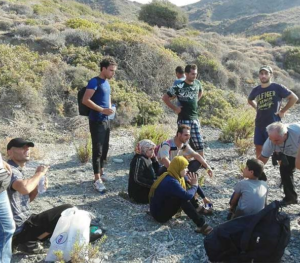Cyprus now the focus of cross-Mediterranean migrants
The island of Cyprus has become the latest migrant hotspot in the Mediterranean.
As the European Commission says arrivals of asylum seekers in the wider eastern Mediterranean are down by 90 per cent compared with 2017, Cyprus’ geographic position – close to Lebanon and Turkey – is making it a magnet for people fleeing war in Africa and Syria.
The island republic, with a population of about 850,000, has seen asylum applications rise by 70 percent in 2018 compared with the previous year, after a 56 percent rise in 2016.
So far, it has granted protection to 15,000 people and an equivalent number of applications are pending a decision. This amounts to more than 3.5 per cent of its population.
And in the first four months of 2019, there were 4,500 new applications, according to Cypriot government figures.
Besides Syrians – who represented a quarter of total applicants in 2018 – the next largest groups came from India, Bangladesh, Pakistan and Cameroon, according to the European data agency Eurostat.
Cyprus’ Interior Minister Constantinos Petrides says the island is facing a possible humanitarian crisis.
“With huge number of unplanned migrants, at some point you exceed your absorbing capacity, and that’s where a humanitarian crisis is created. We have prevented the crisis until now but I’m very concerned for the future,” Mr Petrides said.
Cyprus’ unique politics are making it harder for the island to stem the inflow of asylum seekers.
The Republic of Cyprus, an EU member since 2004, does not have control over the 38 percent of the island in the north, which has been under Turkish occupation since 1974.
The south is internationally recognized, except by Turkey, while the Turkish Republic of Northern Cyprus is only acknowledged by Ankara.
While Turkey struck a deal with the EU in 2016 to stop asylum seekers from reaching its borders – which has largely succeeded in halting large-scale migration to the EU via the Balkans and Greek islands – Ankara doesn’t enforce the deal when it comes to Cyprus.
That has created a new entry point into the EU for refugees and migrants.
Asylum seekers largely arrive by boat. There were 43 boat landings in Cyprus 2018, according to the UNHCR.
From there, asylum seekers cross into the Republic of Cyprus through the Green Line, a U.N. patrolled buffer zone dividing the island.
“The main reason for this influx and the migratory pressure is the result of migratory flows coming from or via Turkey,” Mr Petrides said.
“If we continue to see this increase in numbers it is a question of a few months before it becomes a reception crisis,” Ms Saha said.
There are also fears that the increasing migratory pressure will fuel nationalist populism. Εlam, a far-right party founded in 2008 as a spinoff of Greece’s Golden Dawn, won more than 8 per cent of the vote in May’s European election – up from 2.69 per cent in 2014, but not enough to win a seat in the European Parliament.












